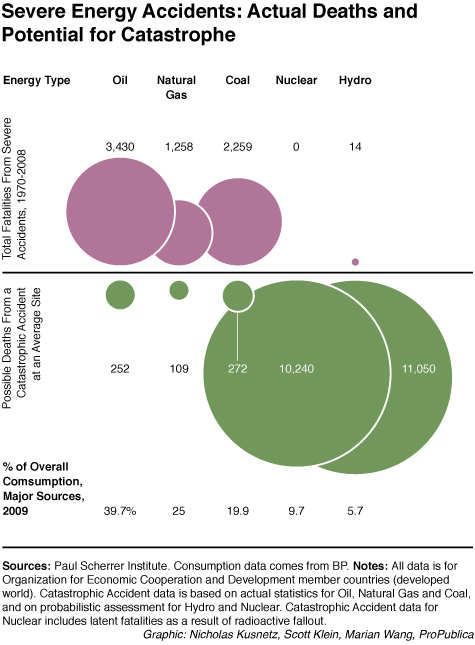 Propublica | Since this time last year, we’ve seen a deadly mine disaster [1], the worst oil spill in U.S. history [2], and now a nuclear crisis in Japan [3]. That got us wondering—how does one compare or quantify the human cost of different sources of energy?
Propublica | Since this time last year, we’ve seen a deadly mine disaster [1], the worst oil spill in U.S. history [2], and now a nuclear crisis in Japan [3]. That got us wondering—how does one compare or quantify the human cost of different sources of energy?As it turns out, a Swiss research organization, the Paul Sherrer Institute, has been doing just that. Using data from the institute, we pulled together a few visualizations.
The top part of the graph shows the actual number of deaths from severe accidents in developed countries [4] from 1970 through 2008. The bottom part of the graph shows the number of deaths that might result [5] from a catastrophic event at an average site in the developed world. This does not show the worst case scenario for any situation, but it gives a sense of the relative risks associated with different sources of energy.
These numbers represent deaths in the developed world from severe accidents only, where at least five people were killed. The accidents have occurred at many stages of the energy supply chain, from coal mining to shipping oil to accidents at actual power plants.
It’s important to note that every-day energy use from fossil fuels kills far more people than accidents. By one estimate from 2000, pollution from power plants results in at least 30,000 premature deaths every year [6] in the United States alone.


0 comments:
Post a Comment